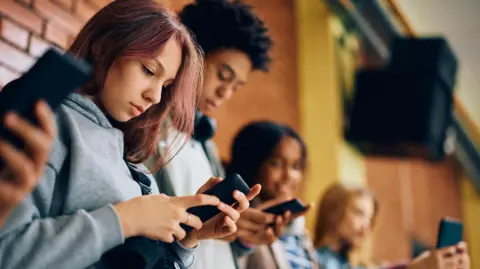The ongoing discourse surrounding smartphone usage in schools has garnered significant attention, especially in light of a recent study indicating that banning phones in schools does not significantly improve students’ academic performance or mental wellbeing. Conducted by researchers at the University of Birmingham, this groundbreaking study explored the effects of smartphone restrictions across various educational institutions, presenting a nuanced view of the common belief that removing phones leads to better outcomes for students.
The comprehensive study analyzed data from 1,227 students across 30 secondary schools in England, comparing institutions that enforced phone bans with those that did not. The results revealed that students’ grades, sleep quality, and overall classroom behavior were not markedly different between the two groups. However, the study did find a correlation between extensive smartphone and social media use and negative outcomes, such as poorer mental health, lower physical activity levels, impaired sleep quality, and disruptive behaviors in the classroom.
Dr. Victoria Goodyear, the study’s lead author, emphasized that while the findings are not inherently against smartphone bans, they indicate that such policies alone are insufficient to resolve the detrimental effects associated with excessive phone usage. As she noted, there is a pressing need to focus on minimizing the total time students spend on their devices rather than solely relying on in-school restrictions.
This research enters a landscape where the debate about smartphone restrictions has been prevalent, with various stakeholders holding differing views. For instance, some educators support the idea of fostering responsible phone usage within schools, contending that the benefits of technology in students’ lives must be balanced with the potential distractions it presents. Conversely, others advocate for strict limitations, aiming to mitigate issues like bullying and social detachment attributed to excessive screen time.
The study’s findings serve as a clear reminder that simply instituting a ban on smartphones doesn’t inherently lead to an improvement in scholastic or mental wellness. Rather, it highlights a more complicated relationship wherein the amount of time spent on phones and social media is directly correlated with negative outcomes. The research utilized established measures, such as the Warwick-Edinburgh Mental Well-Being Scale, to gauge participants’ wellbeing and assess levels of anxiety and depression. Teachers also provided insights regarding students’ academic performance in core subjects like English and Math.
Schools across the United Kingdom have taken varying approaches to smartphone policies. Some, like Twyford School in West London, enforce strict bans, resulting in confiscated devices for rule violations. This policy reportedly encourages more social interaction among peers, according to student testimonials. In contrast, other institutions, like Holy Trinity Catholic School in Birmingham, allow smartphone use outside of educational hours, believing it aids students in navigating their digital lives responsibly.
Moreover, some students and parents report enhanced social dynamics in schools that have chosen to limit or restrict phone use. For example, Ysgol Aberconwy in Conwy implemented a policy requiring students to keep phones locked in magnetic pouches unless authorized for educational purposes. This change reportedly fostered better in-person communication among students and reduced instances of bullying, albeit these factors were not included in the Birmingham study.
As the evidence regarding smartphone policies in schools evolves, it raises broader questions about public policy and child safety online. The UK government faces pressure to take decisive measures regarding phone use in schools, with discussions surrounding the merits of strict regulations or potential social media restrictions for minors. Although the University of Birmingham’s study provides significant insights, further research is essential to establish comprehensive guidelines that effectively balance technology and education in contemporary settings. Thus, stakeholders must consider a holistic approach that encompasses both restrictions during school hours and broader strategies to manage smartphone use in students’ everyday lives.



